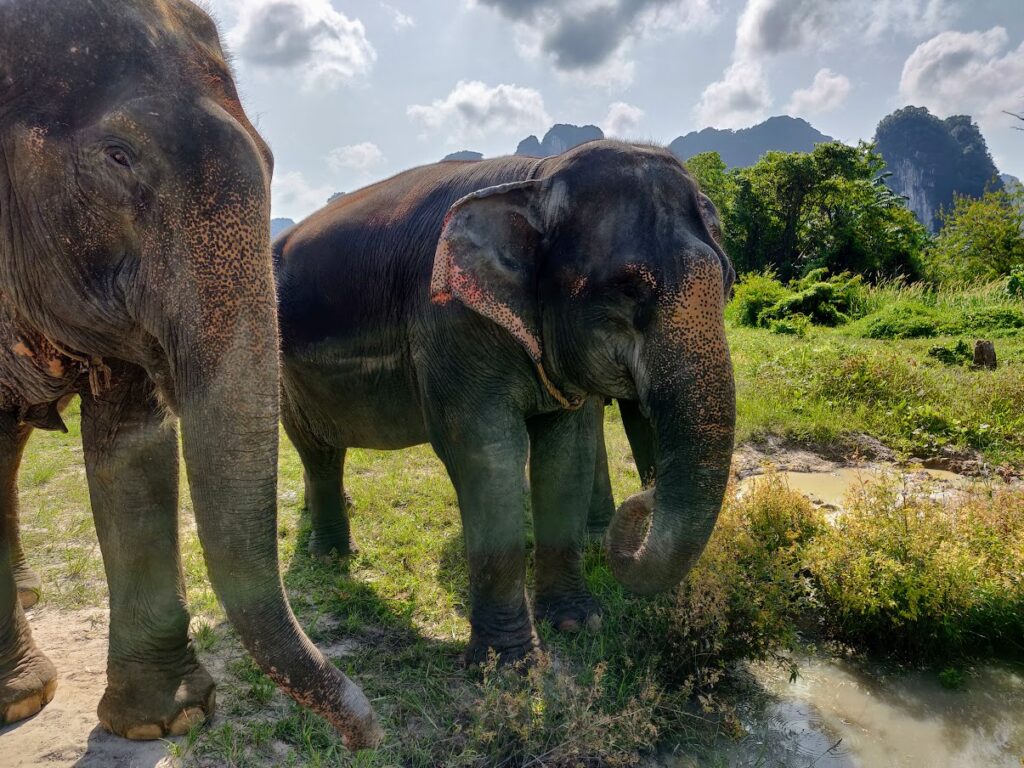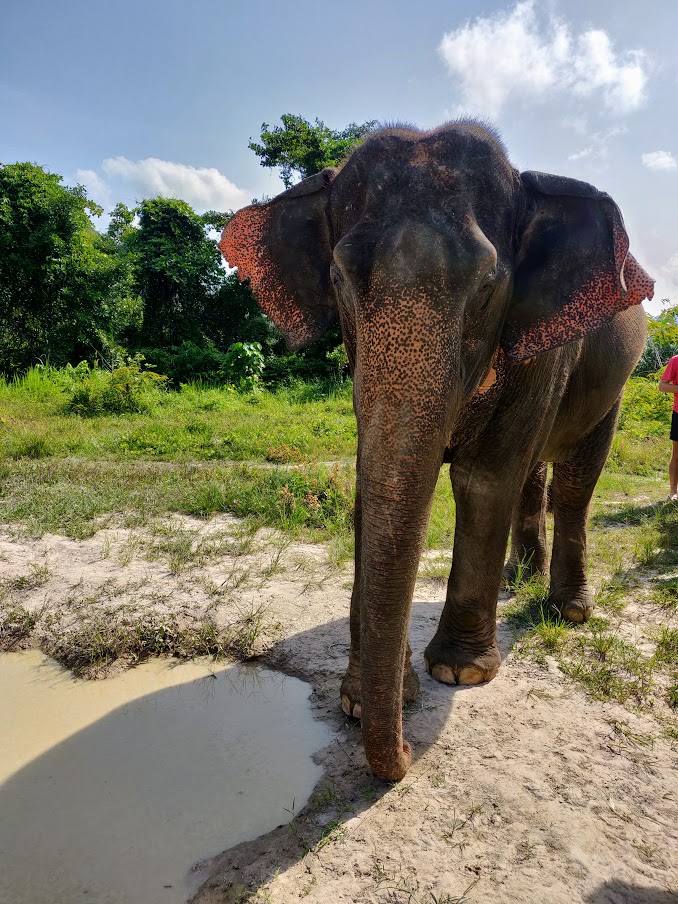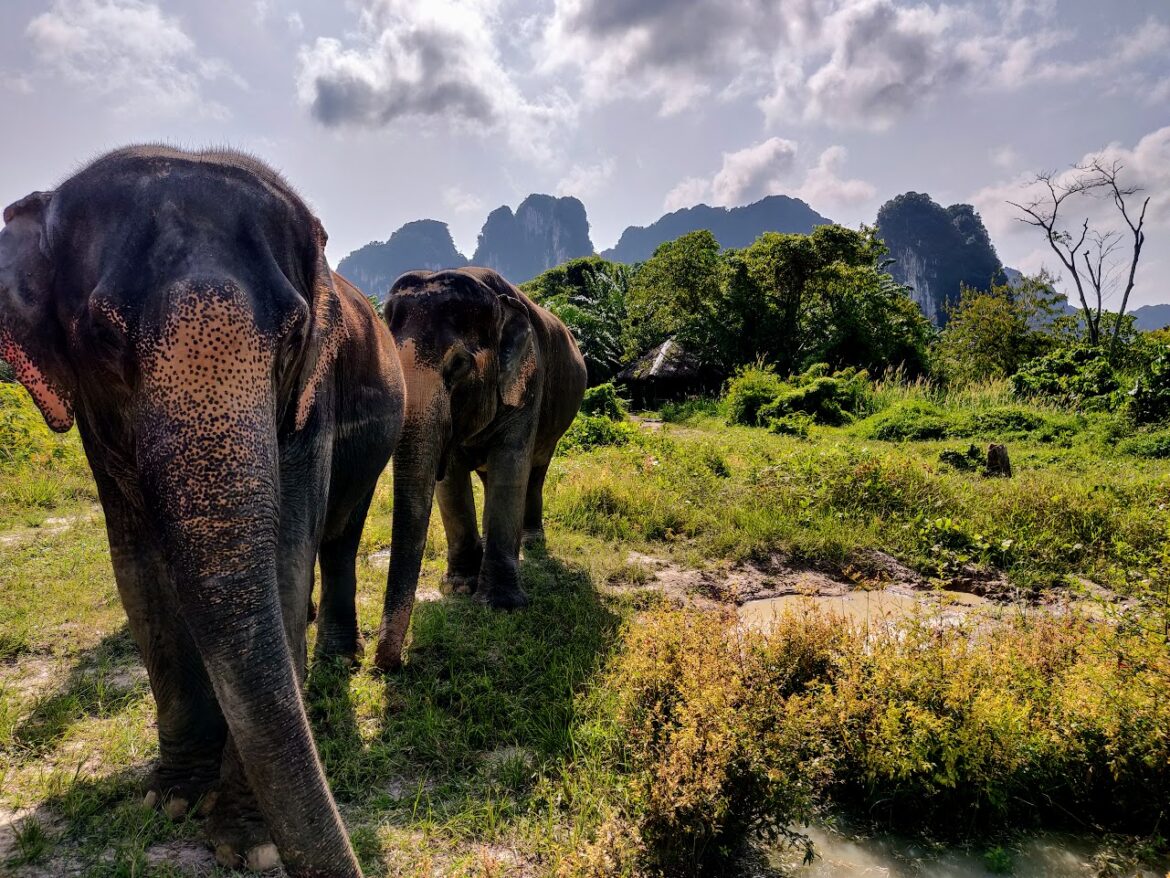Thailand’s deep connection with elephants, etched into its cultural, historical and religious heritage, goes back centuries. However, this association has also experienced a darker side, marked by exploitation, namely for the tourist industry, such as elephant rides and performing “tricks”, often leading to animal abuse, malnutrition and being kept in poor conditions.
There are high chances that as tourists, we may be funding or supporting this type of exploitation without even realising it. But with pools of resources available online now, not knowing any better isn’t an excuse. All the time the demand is there, these exploits will persist, funding animal abuse and often (but not always) other linked illegal activities. As tourists and visitors to Thailand, we have a responsibility to support ecotourism, call out right from wrong, and support the right places doing the right things.
This guide will hopefully outline the key things you need to be aware of and look out for if you’re interested in a genuine, positive, and memorable-for-all-the-right-reasons experience at an elephant sanctuary in Thailand.
Why are elephants so important in Thailand culture?
Thailand’s association with elephants has spread worldwide, and if you’re travelling to Thailand, the chances are pretty high that visiting an elephant sanctuary is on your bucket list. Interactions with these beautiful creatures is a memorable, once-in-a-lifetime experience.
Elephants hold a special place in Thailand culture and history. For centuries, they have been revered symbols of power, wisdom and spiritual significance. The sacred white elephant stands as an emblem of royal prestige, while their presence in Buddhism, the predominant religion in Thailand, hold spiritual significance, associated with the Lord Buddha, and seen as an embodiment of strength and virtue.
While Thailand’s association and connection with elephants is undeniable, it’s crucial that responsible and ethical tourism practices are supported to ensure their protection and wellbeing.

Red flags to look out for
The prospect of seeing elephants out “in the wild” in natural surroundings, rather than in captivity at a zoo can be alluring, and it’s easy to see how people can get caught out and support the wrong type of establishment.
There are dozens of elephant sanctuaries in Thailand, but with the rise of tourism and demand, not all of these are genuine, often with the elephants being mistreated and hurt, forced to perform tricks, be ridden, or have to entertain tourists. Some also use the term “sanctuary” for marketing purposes, attracting tourists for their own financial gain, rather than for the betterment of the elephants and their care. So where do you start in this minefield to ensure you’re doing the right thing?
Below are some red flags to look out for if you’re considering an elephant sanctuary:
- Large groups of people booked to visit
- High prices
- Bull hooks / whips / any sign of staff manhandling the elephants
- Chains / restraints
- Elephant rides / performances
Below is a more in-depth view of why these are red flags and the things you should look out for to determine if a sanctuary is genuine.
Visiting an elephant sanctuary: what should you look out for?
There are elephants all over Thailand who will have spent most, or all of, their life in captivity or suffering. The role of a true sanctuary isn’t just to create a safe haven for these elephants, who can see out the rest of their lives in a peaceful environment, where they are loved and cared for, but they should also support a wider mission, focused on the animal’s wellbeing, conservation, education and overall ethical treatment. Many sanctuaries will be registered charities or not-for-profit organisations, offering tourists experiences which fund the animals care and wellbeing.
Visiting a genuine elephant sanctuary and spending time with these incredible animals is educational, valuable and rewarding. So what should you look out for to know if the sanctuary you want to visit is genuine, and a good’un?
1. No riding allowed
Ethical sanctuaries do not offer elephant rides, performances or shows. These activities often include cruel training methods, and riding elephants can cause physical and psychological harm – avoid any place that promotes these activities (and consider reporting them).
2. Respectful interactions
Feeding, bathing and observing the elephants, with some gentle hands-on interaction which do not cause any stress to the elephants are acceptable activities. Look for sanctuaries that offer respectful interactions and allow the elephants to roam freely, socialise, graze and engage in natural behaviours. Elephants are gentle giants and naturally can be quite playful – like these cheeky chappies when we visited the Krabi Elephant Sanctuary (wait for 45s in to watch these 2 naughty elephants attempt to spray us).
3. No chains, hooks or restraints
Ethical sanctuaries do not use chains, hooks or other forms of restraints to control or discipline the elephants. Avoid somewhere like this if you see any sign of this in photos, or if people mention it in reviews.
4. Care & wellbeing
Ethical elephant sanctuaries will have the care and wellbeing of their elephants as their utmost priority. It goes without saying, but if you read reviews about, or witness, any handlers mistreating the elephants, or using aggressive or harmful methods to control them, avoid, avoid, avoid!
5. Check reviews
Look for reviews from travelers who emphasise the sanctuary’s ethical treatment of elephants, mention knowledgeable staff and meaningful interactions. TripAdvisor is a great resource for this where you can read reviews, or visit the travel forums to ask questions from people who know the area best. If you know the name of a sanctuary you’d like to visit, Google them to see what reviews and website come up. Google reviews is another good resource, as are any independent blogs (like this one!) from people who have visited that sanctuary.
6. Natural habitat
Choose a sanctuary who offer natural, spacious environments, with diverse landscape for the elephants to roam and engage in natural behaviours like grazing, socialising and bathing. Elephants must not be confined to small enclosures or have their movement restricted in anyway.
7. Small groups
A genuine sanctuary should limit the number of people and groups who can visit and interact / observe the elephants at any one time. Large groups of people or overcrowding is not only stressful for the animals, but a smaller group ensures you have a more enjoyable and fulfilling experience, with more quality time with, and learning about, the elephants.
8. Education
A responsible sanctuary should offer an education program as part of their activities, which promotes responsible, ethical elephant tourism and wildlife conservation. They should promote the importance of elephant conservation and the challenges they face. If there’s no mention of these efforts, I’d say that’s a cause for concern.
9. Costs
This is a hard one to judge. Unethical sanctuaries only interested in generating profit can charge very high prices in an effort to maximise their profits, but genuine sanctuaries are also not cheap experiences, where the funds are vital for supporting the care and wellbeing of the elephants. Do some research at different elephant sanctuaries and compare costs. Does the price seem excessively high? Does it seem too good to be true? Or does it seem fairly priced for the level of experience you get (for example, many sanctuaries offer full day or half day experiences, giving you quality time around the elephants).
10. No baby photo ops
Avoid places that exploit baby elephants for photo opportunities, or who encourage any direct contact with them which may stress or harm them for that matter. There are some instances where the calf is separated from its mother, creating unnecessary stress.
11. Sharing the elephant’s history
Many sanctuaries rescue elephants from exploitive environments, such as circuses, trekking camps, or logging operations. The staff at the sanctuary and the elephant’s handlers should know all about each elephant’s background and their rescue story. They will also know details about each elephant’s personality and their daily care routine. If this isn’t on their website, check reviews and blogs to see if people mention this from their experiences at the sanctuary.

Where else to look for support?
The Tourism Teacher does a great job of promoting ethical tourism, with loads of helpful resources and articles.
Responsible Travel has a fantastic list of ethical sanctuaries to visit, not just in Thailand, but all over.
PETA also have some great resources to help you spot a genuine sanctuary from a sham
There are so many practices who claim to be “ethical sanctuaries”, who are in fact just in it for the money, pulling the wool over the eyes of tourists who think they have done the right thing by visiting a “sanctuary” and are unknowingly supporting and contributing to the terrible conditions and poor welfare of these beautiful animals. As I said at the start of this guide, we have a responsibility to call out right from wrong, and support the right places doing the right things.
If you’ve been to a genuine elephant sanctuary and had an amazing experience, or if you’ve visited an unethical sanctuary and you want to ensure others don’t make the same mistake, share your experiences in the comments below. Thanks!




